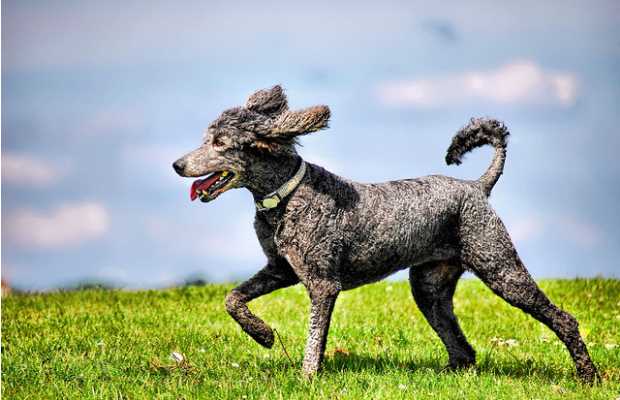Make the Best Choice – Top Dog Tips
As the popularity of dog ownership continues to increase, more people are becoming particular about the type of canines they want to bring into their home. Naturally, the first question that pops into anybody’s mind is what’s the best dog for them, and how to choose a dog breed. That’s a very good question indeed.
There are 178 officially recognized breeds according to AKC, and over 400 dog breeds that are still undocumented. Types of dogs vary tremendously in appearance, temperament, needs, and a ton of other traits, which is why many don’t even know how to choose a dog breed in the first place. Think of the physical difference between a Great Dane and a Chihuahua – how do you know which one’s for you?
In addition to size, dogs also vary that much in personality, too, and you need to take this into account when selecting your new pet. Over time, dog experts came up with many different categories for dog breeds, such as those that are good for families or dogs that do not shed a lot, and so forth.
Purebred vs. crossbred vs. mixed breed

When potential pet owners think about how to choose a dog breed, they usually talk about the different “backgrounds” that need to be considered first.
Purebred dogs, as long as they come from a reliable breeder, usually have very predictable personalities. However, predictable isn’t the same as compatible. For instance, breeds developed to do physical labor, such as hunting or herding dogs, will need a lot of exercise and mental stimulation. Some hunting dogs may have strong instinct to bay or howl. Some herding dogs may have strong instincts to chase and, well, herd.
Reading about a certain breed will give you a very good idea of what to expect from a purebred puppy. Educate yourself on your top choices, because you need to choose a breed that is actually compatible with your lifestyle.
RELATED: 25 best books for dog owners

Crossbred dogs have two purebred parents, but each of a different breed. For instance, a Golden Doodle has one Golden Retriever parent and one Poodle parent. Thanks to the way genetics work, crossbred dogs will usually have predictable personalities for that cross of breeds. That is, all Golden Doodles will be very similar to all other Golden Doodles.
However, the above isn’t true for the offspring of Golden Doodles. A dog whose parents are both Golden Doodles is not a Golden Doodle. Unless both parents are purebred, a puppy is a mixed breed. That’s just how genetics works.
Similarly to the case of purebred puppies, you can generally know what to expect from your crossbred puppy by reading about that cross of breeds. Popular crossbreeds are usually chosen for suitability as pets, so the intense working instincts of their purebred parents will be less pronounced.

Mixed breed dogs, often referred to as “mutts”, are simply dogs whose parents were not purebred. These dogs are frequently overlooked by aspiring dog owners. Mutts have a lot more genetic variation than purebreds or crossbreds, which means you can’t really know ahead of time what kind of personality your puppy is going to have when he grows up.
However, mixed breeds tend to be a lot more “balanced” than pure breeds. The intense traits that were carefully bred into pure dog breeds get “watered down,” which can be a good thing. Mutts probably won’t be as fast as Greyhounds, nor as smart as a Border Collie, nor as strong as a Mastiff, but you probably don’t need any of those traits in a family dog. Mutts also won’t be as sensitive as Greyhounds, nor as demanding as a Border Collie, and will probably live longer than the very large pure breeds like Mastiffs.
RELATED: Important tips on how to care for a dog
That said, since you can’t predict how a mixed breed dog will turn out, you can’t really do much research before choosing your puppy unless you happen to know its parents.
How to choose a dog breed by traits?
For those wanting to know how to choose a dog breed and who are considering pure or mixed breeds, there are some traits to look for. The general theme is that the more extreme a dog is in any one respect, the more extreme that dog’s needs will be in another respect.
Dog’s size

Some people find tiny dogs cute, but they are also fragile, and can be very difficult to train. Unless you have lots of time and patience to raise and care for a tiny dog, consider getting a small dog instead.
Giant dogs, on the other hand, can make impressive pets. The downside is that they grow up slowly, and can take 2-3 clumsy years to learn to manage their enormous bodies. Make sure you are physically capable of handling a boisterous 200 lbs puppy before you bring one home.
Unfortunately, when large breed puppies finally do grow up, they age quickly, and usually develop serious health problems by 6-10 years of age. Be prepared for expensive vet bills and, regardless of your best intentions, a relatively short lifespan.
Grooming needs
Some breeds require minimal grooming, and shed only a little or don’t shed at all. Other dogs have long, luxurious coats, and need regular brushing and grooming. Getting a dog that sheds a lot will also mean vacuuming very frequently, and you would also probably want to consider how difficult it will be to bathe your dog.
RELATED: Best pet coat clippers for grooming dogs
Some dogs, like poodles, have coats that require major maintenance several times a year. Failure to commit to this can lead to serious fur malfunctions, sometimes leading to painful clumps of matted hair. It’s clever to ask yourself how to choose a dog breed based on your own lifestyle, so make sure you know what you’re getting into ahead of time, and that you’re up to the task of keeping your dog’s coat healthy and happy.
Exercise needs

A dog needs to be well-exercised or it will not be trainable. It’s that simple. Yet a failure to meet a dog’s exercise needs is still one of the most common causes of dog behavioural problems.
Some working dog breeds have truly astounding exercise requirements, such as German Shepherds or pit bull dogs. Do not underestimate the commitment this requires, or you will end up with an uncontrollable pet and neither of you will be happy.
When you’re considering how to choose a dog breed, remember that not only do you need to think how much exercise your dog will need, but also whether they can live your lifestyle, too. For example, if you’re an athletic person with a very active life, some dogs may not be able to keep up with you.
RELATED: How to teach a dog to walk on a leash
There are canines that have minimal exercise requirements, and are perfectly content with only a couple walks around the block a day. In fact, certain breeds such as English Bulldog are pretty lazy and prefer to lie down most of the time, whether it’s indoors or outdoors. This probably won’t be a problem for anybody that isn’t exceptionally athletic, however, and is looking for a coach potato breed.
Temperament and trainability

Purebred dog personalities are typically quite predictable. Poodles are very emotionally sensitive. Almost all hounds love to howl or bay. Huskies love to wander off on adventures and often run away and get lost. Weimaraners are nervous and skittish.
Every canine breed has its own specific traits, and if you’re trying to figure out precisely how to choose a dog breed based on all the variables, it will take a while but will be so worth it.
Begin by asking yourself some of the following questions:
- Do you have time to socialize a breed that has anti-social tendencies?
- Do you have children? Does this breed play well with children?
- Do you have other dogs? Is this breed compatible with those dogs’ personalities?
- Do you have other pets? Will this breed try to eat them?
- How stubborn is this breed? How much experience do you have training dogs?
- How strong is this breed? Can you physically control this dog?
- How often will the dog be alone? Is this breed independent, or prone to separation anxiety?
Be honest with yourself about what responsibilities you want to take on. No matter what breed you choose, a well-trained dog will bring joy and satisfaction to your life.
Related






Very interesting info!Perfect just what I was looking for!